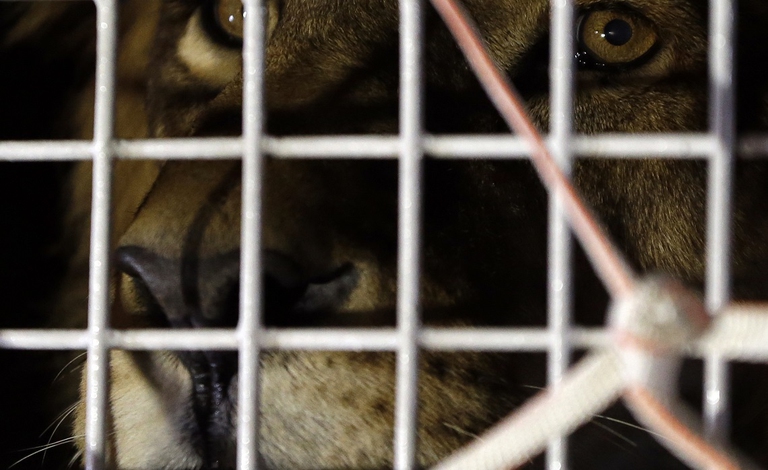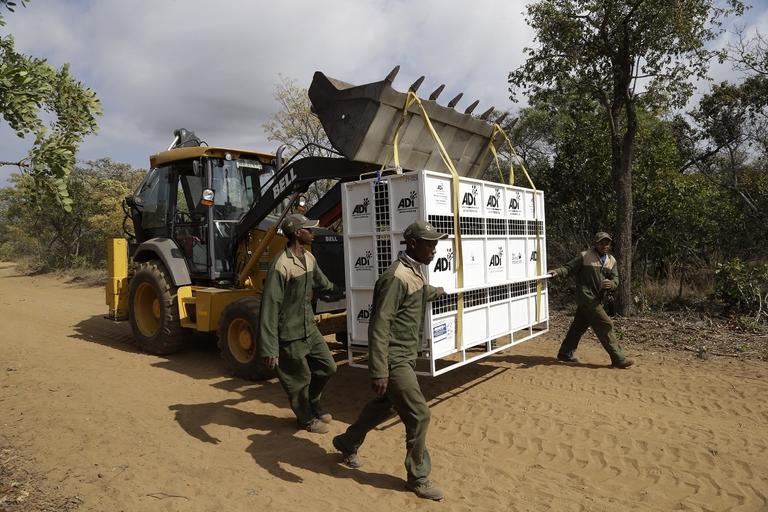
Our species took its first steps in a world covered in trees. Today, forests offer us sustenance, shelter, and clean the air that we breathe.
After a life spent in captivity, they have finally gone back home. This is the success story of 33 lions rescued from South American circuses (24 from Peru and 9 from Colombia) and brought to South Africa. They probably longed for their homeland while performing – in chains – in unnatural, humiliating shows. The lions landed in Johannesburg in
After a life spent in captivity, they have finally gone back home. This is the success story of 33 lions rescued from South American circuses (24 from Peru and 9 from Colombia) and brought to South Africa. They probably longed for their homeland while performing – in chains – in unnatural, humiliating shows. The lions landed in Johannesburg in late April thanks to the Spirit of Freedom operation, organised by the Animal Defenders International (ADI) association. It was the largest airlift of lions in history, said Jan Creamer, president of the environmental association.
Many Latin American countries, including Mexico, Colombia, and Peru, took part in what has been defined as the “South American revolution against animal suffering in circuses”. They have adopted laws to ban the use of wild animals in circuses. This is a clear message for the whole world to follow suit.
The 33 lions took off from Bogota airport, Colombia’s capital, with local schoolchildren saying farewell with messages like ‘Enjoy your Freedom’. “Everyone travelled pretty well. They only had airline food and they’re looking forward to a good meal now,” said the President of ADI. The journey cost about 400,000 dollars and the lions were transported in specific cages and underwent aromatherapy in order to reduce stress before boarding.
The animals are back in their homeland, but they can’t be released into the wild. After being treated in a specialised centre, they will be brought to a protected area, the Emoya Big Cat Sanctuary in Vaalwater, in the province of Limpopo. The sanctuary extends for an area of 5,000 hectares on a private estate that boasts natural pools and clearings. “These lions have endured hell on earth and now they’re heading home to paradise. This is the world for which nature intended these animals for,” said Jan Creamer. “The rescued lions were found in poor conditions. Many of them had their claws removed and had broken teeth. One is missing an eye and another is nearly blind”.
Siamo anche su WhatsApp. Segui il canale ufficiale LifeGate per restare aggiornata, aggiornato sulle ultime notizie e sulle nostre attività.
![]()
Quest'opera è distribuita con Licenza Creative Commons Attribuzione - Non commerciale - Non opere derivate 4.0 Internazionale.
Our species took its first steps in a world covered in trees. Today, forests offer us sustenance, shelter, and clean the air that we breathe.
Poachers in Africa are encroaching on wildlife land and killing rhinos in travel hot spots now devoid of visitors due to the coronavirus pandemic.
Actor and environmental activist Leonardo DiCaprio has contributed two million dollars to a fund to protect Virunga National Park in Congo from threats such as terrorism, the coronavirus and poaching.
For the first time in seventeen years, Iceland’s two main whaling companies won’t resume whale hunting. The announcement concerns this year’s season but could carry into the future.
The relationship between the coronavirus and wildlife is complex: while the pandemic may lead to a reduction in the illegal trade in wild animals, it may also encourage it in other respects.
The largest coral reef in the world is severely threatened by climate change, but researchers are developing strategies that could contribute to saving the Great Barrier Reef.
NGO Free the Bears has opened a mountain sanctuary for moon bears in Laos. With the government’s help, it aims to close all bile farms by 2022.
Seychelles have extended its marine protected area, which now covers over 400,000 square kilometres, an area larger than Germany.
The tapir was reintroduced into Brazil’s Atlantic Forest, the country’s most at-risk ecosystem. The species can play a key role in the forest’s recovery.









